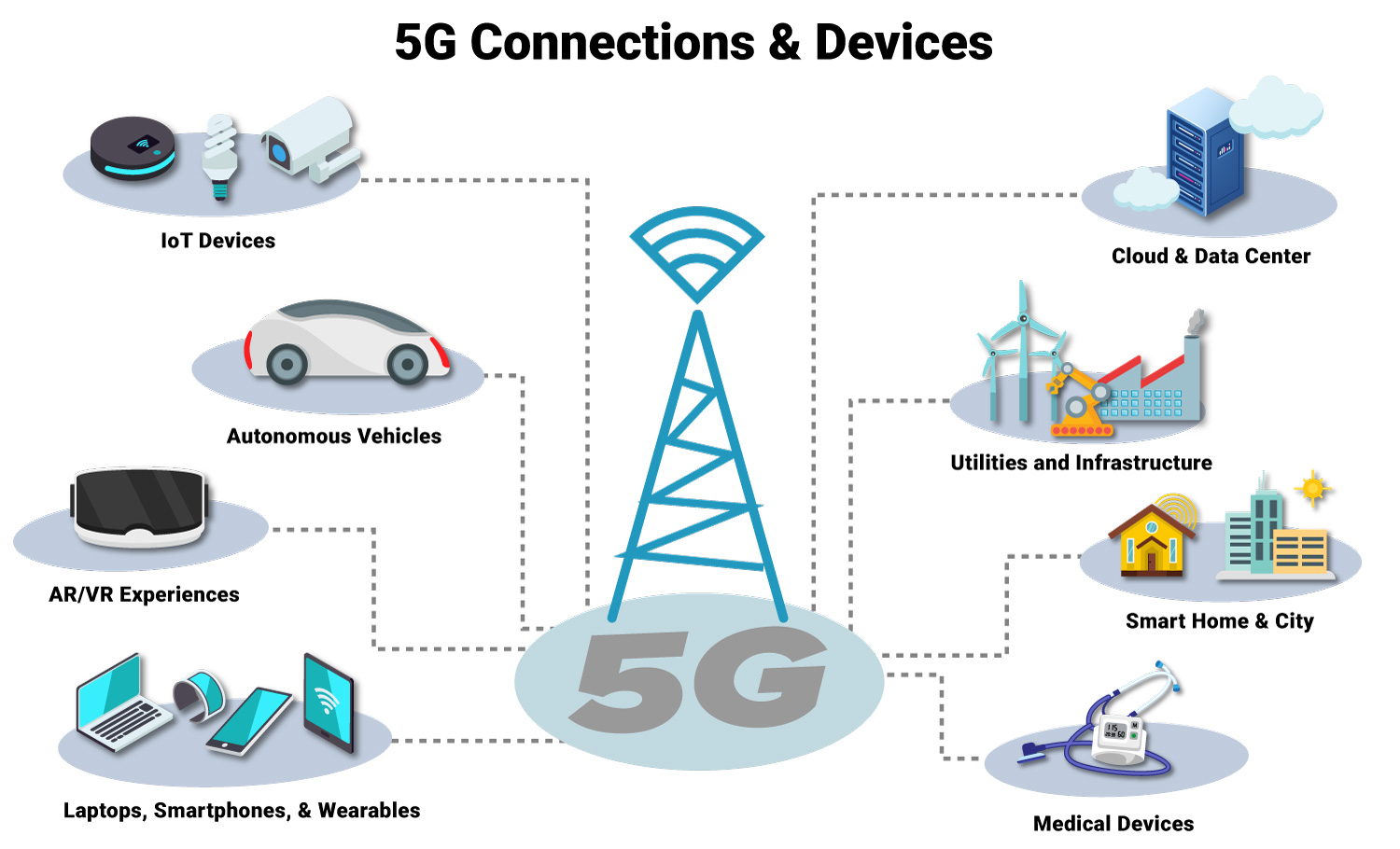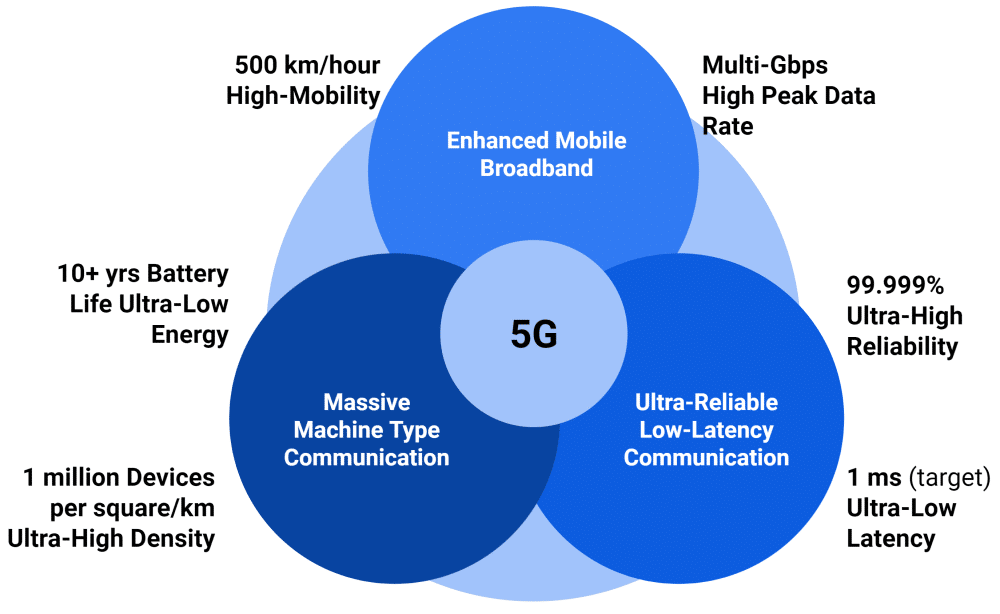The Role of 5G in Consumer Electronics
5G technology is revolutionizing the way we interact with consumer electronics, pushing the boundaries of performance, connectivity, and functionality. With its promise of ultra-fast speeds, low latency, and higher bandwidth, 5G is set to reshape the electronics industry, from smartphones to wearables and smart homes. But what exactly does 5G mean for the consumer electronics landscape, and how will it impact the devices we use every day?
In this article, we will explore the role of 5G in consumer electronics, the key benefits it offers, and how it’s transforming the future of the industry. Whether you are a tech enthusiast, a consumer electronics manufacturer, or just curious about the latest trends, understanding 5G and its potential is crucial for staying ahead of the curve.

What is 5G?
5G refers to the fifth generation of mobile network technology. It represents a massive leap forward from its predecessor, 4G, offering significantly faster speeds, lower latency, and increased capacity. While 4G supported peak download speeds of up to 100 Mbps, 5G can potentially achieve speeds of up to 10 Gbps. This makes it ideal for a wide range of applications, especially those requiring high data throughput and real-time communication.
Unlike earlier generations, 5G is designed to handle not only smartphones but also a vast network of connected devices, enabling the Internet of Things (IoT) to flourish. By connecting everything from home appliances to wearables and cars, 5G will play a pivotal role in building a more connected, smarter world.
How 5G is Revolutionizing Consumer Electronics
1. Enhanced Mobile Experiences
One of the most obvious applications of 5G in consumer electronics is the enhancement of smartphones. With 5G-enabled phones, users can expect faster download and upload speeds, better streaming quality, and more responsive applications. Whether you’re downloading an HD movie in seconds or streaming high-quality content without buffering, 5G will drastically improve mobile internet experiences.
- Faster Download Speeds: Downloading large files, games, and apps will be faster than ever, providing a seamless mobile experience.
- Improved Streaming Quality: 5G supports 4K and even 8K streaming, allowing for ultra-high-definition content on your mobile devices.
- Low Latency Gaming: Cloud gaming will thrive on 5G, with virtually no lag or delays in interactive games, delivering an immersive experience.
2. The Future of Wearables
Wearables, such as smartwatches and fitness trackers, are becoming more advanced as they integrate with 5G technology. With 5G, these devices will not only function more efficiently but also enable a new class of features that were previously impossible due to network constraints.
Key Benefits for Wearables:
- Real-Time Health Monitoring: Devices will be able to transmit health data instantly to healthcare providers, enabling immediate action when necessary.
- Seamless Connectivity: No more relying on your phone for connectivity. 5G-enabled wearables can operate independently, offering more convenience and functionality.
- Smarter Devices: With the low latency and high bandwidth of 5G, wearables can now support more advanced features like real-time language translation or augmented reality (AR) applications.
3. Smart Homes Powered by 5G
As part of the Internet of Things (IoT), 5G will dramatically improve the smart home ecosystem. With the ability to support thousands of devices simultaneously, 5G will enable faster communication between smart appliances, security systems, and home automation tools.
- Faster Smart Home Automation: Smart thermostats, lighting systems, and security cameras will communicate more efficiently, ensuring seamless integration and better performance.
- Enhanced Smart Appliances: Imagine your fridge ordering groceries automatically or your washing machine detecting the most efficient washing cycle based on current energy prices—5G will make these features possible.
4. Revolutionizing Virtual and Augmented Reality (VR/AR)
Both Virtual Reality (VR) and Augmented Reality (AR) are heavily reliant on fast, low-latency networks to deliver the immersive experiences users expect. 5G will unlock the full potential of these technologies by allowing for real-time processing and low latency connections.
Key Applications of VR/AR with 5G:
- Cloud-Based VR: 5G will enable cloud-based VR gaming and simulations, removing the need for expensive hardware and offering a more immersive, accessible experience.
- AR for Retail: With 5G, AR applications can offer real-time product visualization and interactive shopping experiences, allowing customers to try on clothes or see how furniture fits in their living room before buying.

5. Self-Driving Cars and 5G Connectivity
The future of autonomous vehicles relies on fast, reliable communication networks. With 5G, self-driving cars can exchange data in real-time with their environment, including other cars, infrastructure, and pedestrians. This will make them safer, more efficient, and able to make split-second decisions.
Key Features of 5G in Autonomous Vehicles:
- Real-Time Communication: Cars can receive real-time data about road conditions, traffic, and hazards, allowing for more accurate decision-making.
- Improved Safety: With 5G, cars can instantly communicate with one another to avoid accidents, creating a more connected driving environment.
- Enhanced Traffic Management: 5G will allow for smarter traffic lights and vehicle-to-everything (V2X) communication, improving the overall flow of traffic.
6. The Role of 5G in the Future of IoT
The Internet of Things (IoT) refers to the network of connected devices that communicate with each other to automate tasks and improve functionality. 5G will be a key enabler of the IoT revolution, allowing for a massive increase in connected devices without compromising on performance or speed.
IoT Applications Enhanced by 5G:
- Smart Cities: 5G will allow cities to become smarter by enabling connected infrastructure, such as smart streetlights, traffic sensors, and waste management systems.
- Connected Healthcare: 5G will enable remote surgeries, real-time health monitoring, and the rapid exchange of medical data, improving healthcare outcomes.

Why 5G Matters in Consumer Electronics
As we’ve seen, 5G technology offers a host of benefits for consumer electronics, from faster speeds and lower latency to the ability to connect more devices simultaneously. The impact of 5G on consumer electronics is far-reaching, enabling smarter, more connected, and immersive experiences.
Key Takeaways:
- Faster Mobile Experiences: 5G will offer lightning-fast download speeds, improved streaming, and low latency gaming.
- Wearables will become more advanced with real-time data transmission, smarter features, and standalone connectivity.
- Smart Homes will operate more efficiently with faster communication between devices, improving automation and performance.
- VR/AR will reach new heights of immersion with cloud-based experiences and real-time interaction.
- Autonomous Vehicles will become safer and more efficient with real-time data exchange and better traffic management.
- IoT will thrive on 5G, enabling smarter cities, connected healthcare, and much more.
FAQs
What devices are compatible with 5G?
Most modern smartphones and smart devices are now being built with 5G compatibility, including devices from Apple, Samsung, and Google. 5G-enabled wearables and IoT devices are also entering the market, with more expected in the coming years.
How does 5G improve virtual reality (VR) and augmented reality (AR)?
5G reduces the latency and bandwidth limitations of previous generations, allowing for real-time, immersive VR/AR experiences without lag. This opens up new possibilities in gaming, retail, and healthcare.
Will 5G affect my smartphone’s battery life?
While 5G does consume more power than 4G, advancements in battery technology and 5G network optimization are helping to reduce the impact on battery life. Future smartphones are expected to feature more efficient power management when using 5G.
Conclusion
The role of 5G in consumer electronics is already beginning to take shape, with many devices and applications benefiting from this revolutionary technology. From faster speeds and low latency to enabling smart homes, wearables, autonomous vehicles, and the IoT, 5G is paving the way for the next generation of connected, immersive, and
intelligent devices.
As 5G continues to roll out globally, expect to see more advanced, high-performance consumer electronics that will enhance the way we live, work, and interact with technology.

